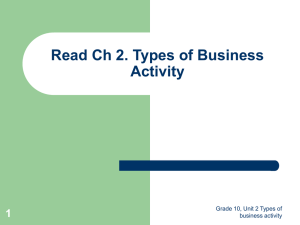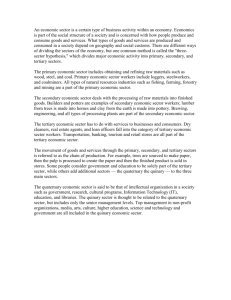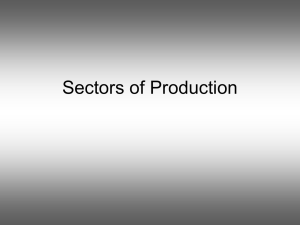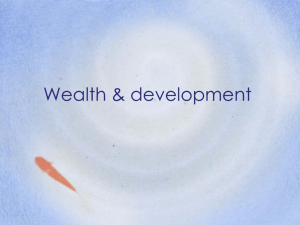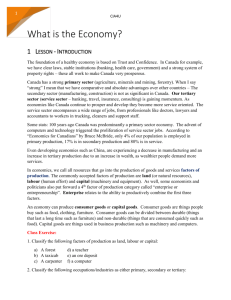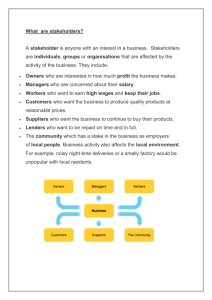from 4 business notes
advertisement
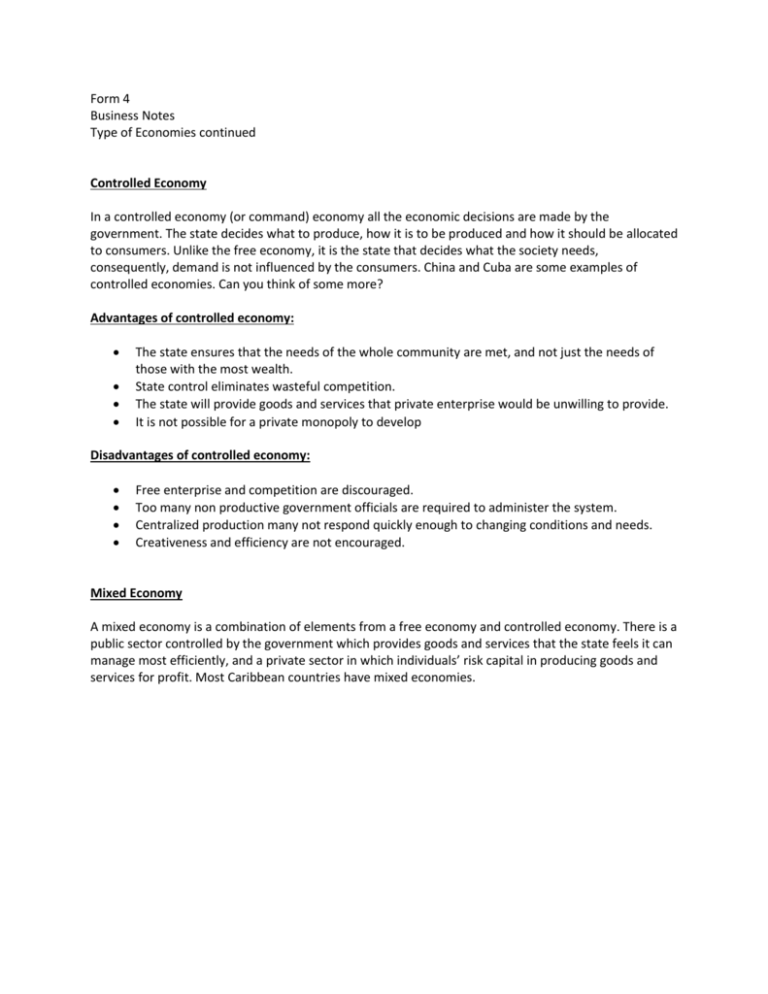
Form 4 Business Notes Type of Economies continued Controlled Economy In a controlled economy (or command) economy all the economic decisions are made by the government. The state decides what to produce, how it is to be produced and how it should be allocated to consumers. Unlike the free economy, it is the state that decides what the society needs, consequently, demand is not influenced by the consumers. China and Cuba are some examples of controlled economies. Can you think of some more? Advantages of controlled economy: The state ensures that the needs of the whole community are met, and not just the needs of those with the most wealth. State control eliminates wasteful competition. The state will provide goods and services that private enterprise would be unwilling to provide. It is not possible for a private monopoly to develop Disadvantages of controlled economy: Free enterprise and competition are discouraged. Too many non productive government officials are required to administer the system. Centralized production many not respond quickly enough to changing conditions and needs. Creativeness and efficiency are not encouraged. Mixed Economy A mixed economy is a combination of elements from a free economy and controlled economy. There is a public sector controlled by the government which provides goods and services that the state feels it can manage most efficiently, and a private sector in which individuals’ risk capital in producing goods and services for profit. Most Caribbean countries have mixed economies. Privatisation In the 1980s and 1990s, most Public Sector companies became privatized. This means that they were sold off by the government to private buyers. So they are now Private Sector companies owned by private shareholders. Advantages of Privatisation The new owners operate the business with profit as a main aim. This encourages them to run the business efficiently. Competition may now be encouraged if the business is sold off to several different owners. This helps to increase efficiency and keep prices low. Governments are often short of money. New owners may have additional capital to invest in improving the service offered by the business. Important business decisions will now be made for reasons of business efficiency- not by government popularity. For example- the government might subsidize a loss making coal mine to protect miners’ jobs. A private mine owner would close the mine to use resources more efficiently and profitably elsewhere. The sale of the business to private owners raises money for the government. Disadvantages of Privatisation As the new owners are interested mainly in profits, some services making losses may be closed. These might be very important for some people or areas, for example, closing a rural bus route or not delivering letters to isolated areas. Workers’ jobs could be lost as the new owners attempt to increase efficiency in order to raise profits. The business might be sold off to one owner who would still be able to run it as a monopoly. This could lead to higher prices for the customers. Only a few people will benefit from owning the business (the owners), whereas before privatization, the whole country could benefit from any profits made as it was owned by the government. Levels of economic Activity Businesses can be classified in different ways. One way is to group them by industry. So, all shops selling food could be classified as retailers. All farms could be classified as part of agriculture. All schools and colleges could be classified under education. These industries are often grouped into three sectors- the primary, secondary and tertiary sectors. The primary sector The primary sector is that part of the economy where raw materials are extracted, grown or cut down. One industry in the primary sector is agriculture. Farmers grow crops like wheat and rear animals for slaughter like pigs or sheep. Fishing, mining and quarrying are other examples of primary sectors. You should also note oil and natural gas extraction are also primary sector Industries in the primary sector produce raw materials which are needed to make other goods and services. E.g. of raw materials are wheat, pork, fish, timber, coal, oil and gas. The secondary sector The secondary sector is also called the manufacturing sector of industry. It is the sector where goods are produced. These can be anywhere from steel bars to paper, to motor vehicles to tins of food. A Good is a physical product. It can be seen or touched. Goods are made from raw materials produced by industries in the primary sector. Examples of industries in the secondary sector include energy and water supply, construction and all manufacturing industries. The tertiary sector The tertiary sector is also called the service sector of the economy. It is where services are produced. A service is a non physical product like a haircut. A service cannot be touched physically, nor can services be stored for future use like a good. Services are used up immediately they are created. The main industries in the tertiary sector are Distribution of goods(retailing also) Communication and postal services Hotels and restaurants Financial services Transport and storage services Defence services Education Health and social work. Which sector of industry is important in your country? How do we determine? 1. The number of workers employed in each sector. 2. The value of output of goods and services. Trends that have risen over the years show that countries that tend to employ more people in the primary sector tend to be developing countries, where only recently manufacturing has been established. In developed countries, manufacturing and service sectors are adopted and the majority of their population are employed in these sectors. The output of the tertiary sector is often higher than in the other two sectors combined. In the UK, there has been a decline in the manufacturing industries. The term commonly used is decentralization. This occurs when there is a decline in the importance of the secondary, manufacturing sector of industry in a country. The chain of production Primary, secondary, tertiary industries are linked together in a Chain of Production. E.g. wheat is grown on farms in the primary sector, wheat is then turned into Flour in the Secondary Sector. The Flour is used to make bread in a bakery also Secondary Sector, finally the bread is sold in shops and supermarkets in the tertiary sector.

